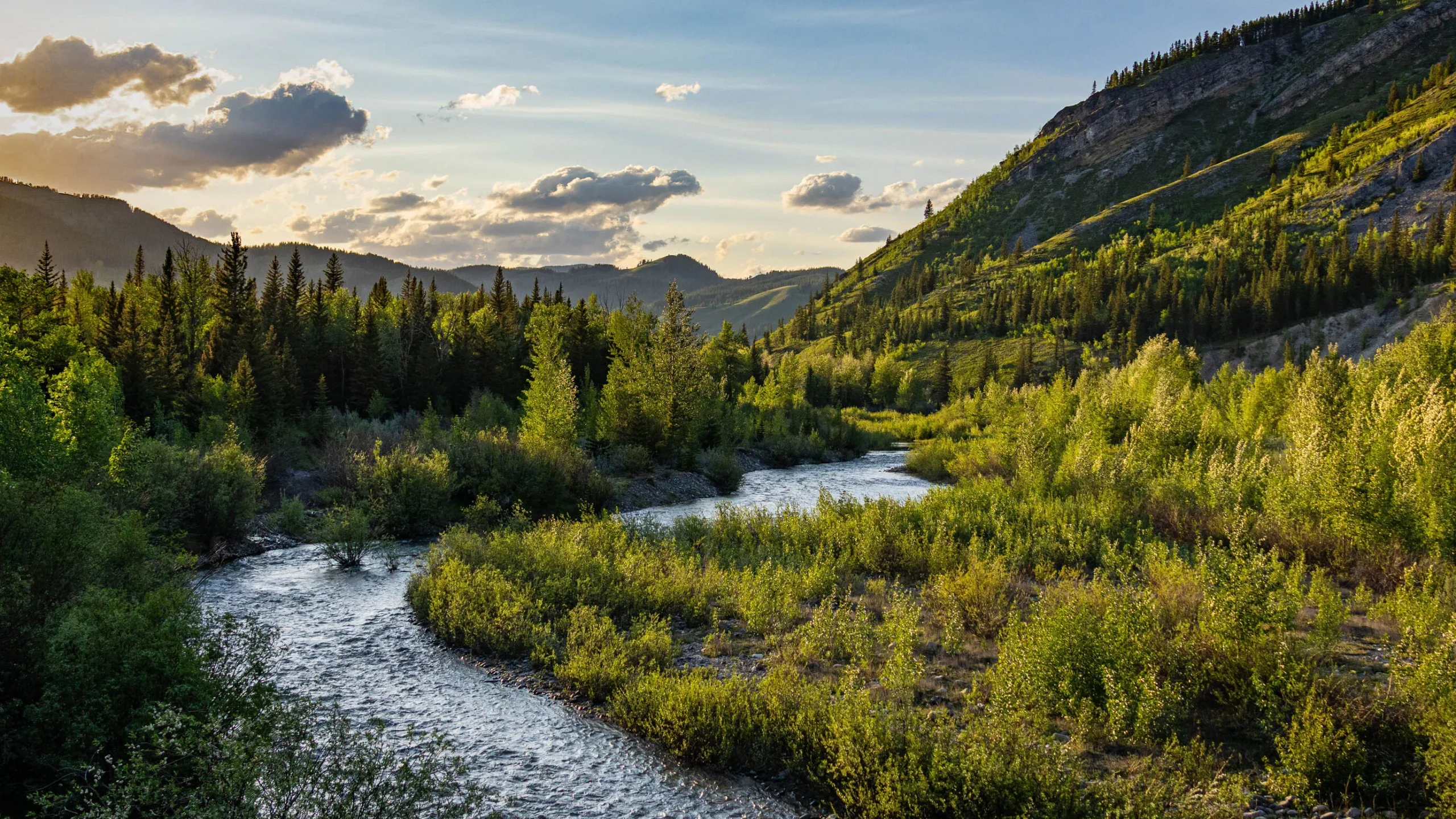July 11, 2024
Mohkínstsis | Wîchîspa | Guts’ists’i | Calgary
On Friday June 29, the Government of Alberta made changes to the Wildlife Act to re-instate hunting as a management tool for ‘problem’ grizzly bears. This concerning change to the management of a species at risk was made without consultation with conservation groups or the general public.
Grizzly bears are a threatened species in Alberta and essential to a healthy, functioning environment. Their large home ranges make grizzlies an ‘umbrella’ species for land-use planning and management: Managing the landscape for grizzly bear populations also provides habitat for many other species, helps maintain healthy aquatic ecosystems and fisheries, and protects clean and abundant supplies of water for downstream communities (human and wildlife).
While their populations have stabilized and, in some regions, even increased, they have not ‘recovered.’ This is in part because the Alberta Grizzly Bear Recovery Plan has not defined what recovery means. The increase in their population over the last decade demonstrates successful recovery efforts due to the hard work of many people working across the province to ensure that grizzly bear populations grow and fulfill their ecological role on the landscape.
Now that some populations have begun to stabilize, recovery efforts should focus on refining population estimates, improving habitat management, and supporting human-wildlife coexistence. Achieving such human-wildlife coexistence requires defining what ’coexistence’ means in practice and, subsequently, to implement and adequately resource long-term measures.
Coexistence can be accomplished through various tools, such as those described in the Alberta Grizzly Bear Recovery Plan, and which include attractant management (such as fruit trees) in municipalities, education, subsidy programs for predation losses, habitat protections, as well as research and monitoring programs. Furthermore, the 2010 recovery plan speaks to the need to hire more grizzly bear recovery and conflict management staff across Bear Management Areas (BMAs). Alberta currently does not have a single human-bear conflict specialist after the previous specialist retired several years ago.
CPAWS Northern and Southern Alberta believe that these evidence-based actions for coexistence better prioritize community safety and promote resilient and self-sustaining wildlife populations.
There is no evidence to suggest that hunting is an effective tool in reducing human-bear conflict.
If killing of a grizzly bear is deemed a necessary management intervention for community safety, these actions should be carried out by a conservation officer who is trained in human-wildlife conflict management rather than downloading this responsibility to individual Albertans.
Our key concerns specific to these changes are:
- Hunting any species at risk is inappropriate. Under Alberta’s Wildlife Act the harvesting or trafficking a listed species is illegal.
- Until the Grizzly Bear Recovery Plan has been fully implemented, recovery has been defined, and grizzly bears have been deemed recovered by biologists, the Wildlife Act should be respected.
- The change to Alberta’s Wildlife Act as written is vague and leaves much to ministerial discretion.
- There are unclear requirements for a bear to be labelled as a problem or how regions will be defined as ‘areas of concern.’
- There is a lack of clarity on how the process will occur, providing opportunity for error, and potentially slowing down or confusing management action that could be better taken by conservation officers.
- There are no measures included to adequately resource government staff or community programs to implement coexistence measures.
- These changes could disincentivize bear safety and coexistence measures which would prevent conflicts in the first place.
Ultimately, the most important step that should be taken to achieve grizzly bear recovery and manage human-bear conflict is prioritizing the conservation, restoration, and management of grizzly bear habitat – a step that has been sorely overlooked. Grizzly bears demonstrate clear intolerance for disturbance from humans in their habitat such as those from trails and roads. Increasing access into previously secure grizzly habitat increases the chance of negative encounters and can push bears out of preferred habitat into other areas, again increasing the potential for conflict with people. Securing space for them to feed, breed, and exist on the landscape is essential for management of this iconic Albertan species.
Nothing in the amendments made address this critical step, and we are deeply disappointed at the Ministry’s chosen direction.
More News

Logging Permits Approved in Key Trout Spawning Area of Oldman River

All-Seasons Resort Policy Released


